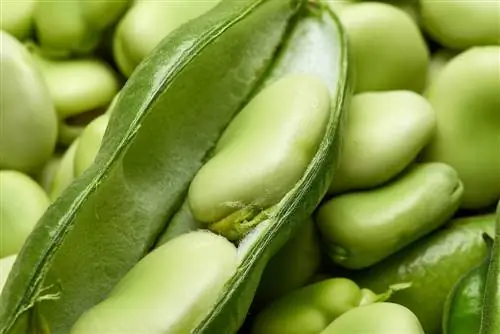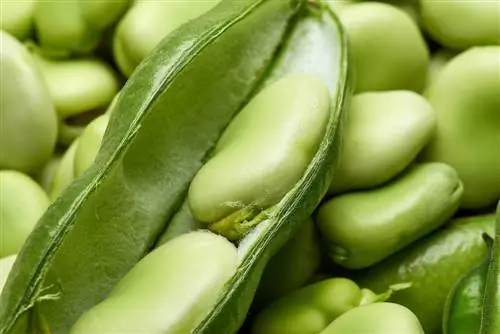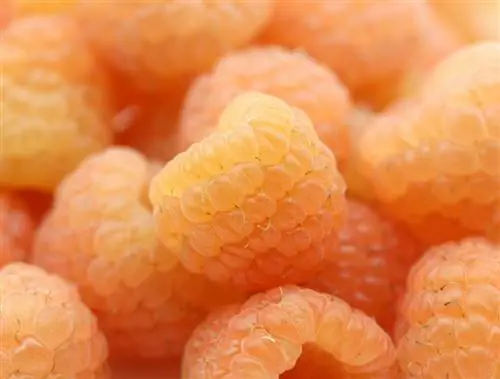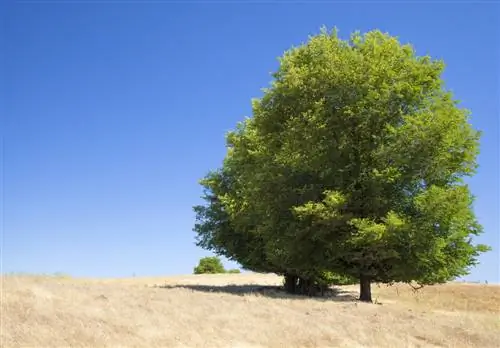- Author admin [email protected].
- Public 2023-12-16 16:46.
- Last modified 2025-01-23 11:22.
As a poor man's food, the broad bean disappeared from the menu in the post-war period and gradually fell into oblivion. The soybean's reputation isn't much better: it's associated with rainforest deforestation and monocultures. Both legumes have much more to offer than their reputation suggests.

What are the differences between field beans and soybeans?
Faba beans and soybeans are both he althy legumes, although soybeans contain more fat. Broad beans improve soil quality by absorbing nitrogen, while soybeans are mostly used in tofu and soy milk. Broad beans are considered to be more environmentally friendly when used as livestock feed.
Are fava beans or soybeans he althier?
Both broad beans and soybeans arevery he althy They contain a lot of protein at 31 and 32 grams respectively and are also rich in vitamins A, E and B vitamins, magnesium, calcium and iron. In contrast to field beans, soybeans contain more fat, which is why they are also used to produce cooking oils. Soybeans and broad beans, like all legumes, should be soaked before cooking, then they are easier to digest.
How do faba beans and soybeans end up on the plate?
Soybeans are particularly well known in the form ofTofu and soy milk, but they are also used in widely used meat alternatives. As a bean, they are eaten primarily in Asian dishes as edamame; these are unripe soybeans that taste particularly crunchy and sweet. Field beans, on the other hand, are currently mainly known in their unprocessed form. In the Mediterranean they are served as a special delicacy, for example in Spain as Habas Tostadas. However, they are just as suitable for meat substitute products as soybeans and are already used in protein powders and egg substitutes.
What advantages do field beans have over soybeans in agriculture?
Faba beans are able to absorbnitrogen from the air and release it into the ground. This means that the cultivation of field beans has a decisive advantage over soybeans. Through this process, faba beans improve soil quality and are ideal as a crop rotation for rapeseed or cereals that have a high nitrogen requirement. Because of this property, field beans are also planted in fields as green manure. Both broad beans and soybeans provide a good source of food for bees and other insects.
Tip
The environmental friendliness of field beans and soybeans in comparison
The differences are particularly crucial when used as livestock feed. The soy intended for human consumption comes predominantly from Europe, often even from organic farming. Tofu and soy milk are therefore usually unrelated to imported soy, which is blamed for the deforestation of the rainforest in South America. This is largely imported into Europe as cheap livestock feed and fed to cattle, pigs, poultry and even farmed fish. Here the field bean is definitely considered a much more environmentally friendly alternative to imported soy. In terms of human consumption, the faba bean may be more environmentally friendly than soy due to its ability to add nitrogen to the soil. However, the growing locations and conditions also play a crucial role here.






